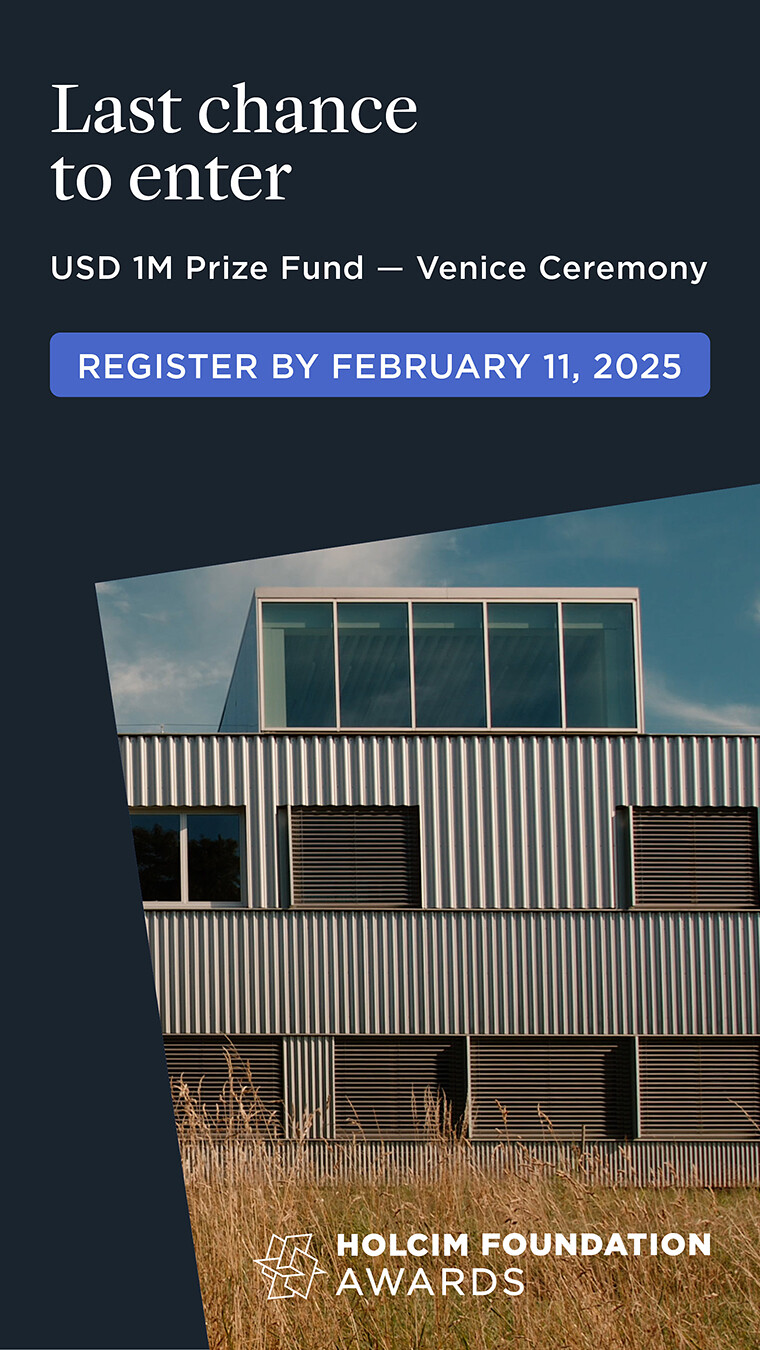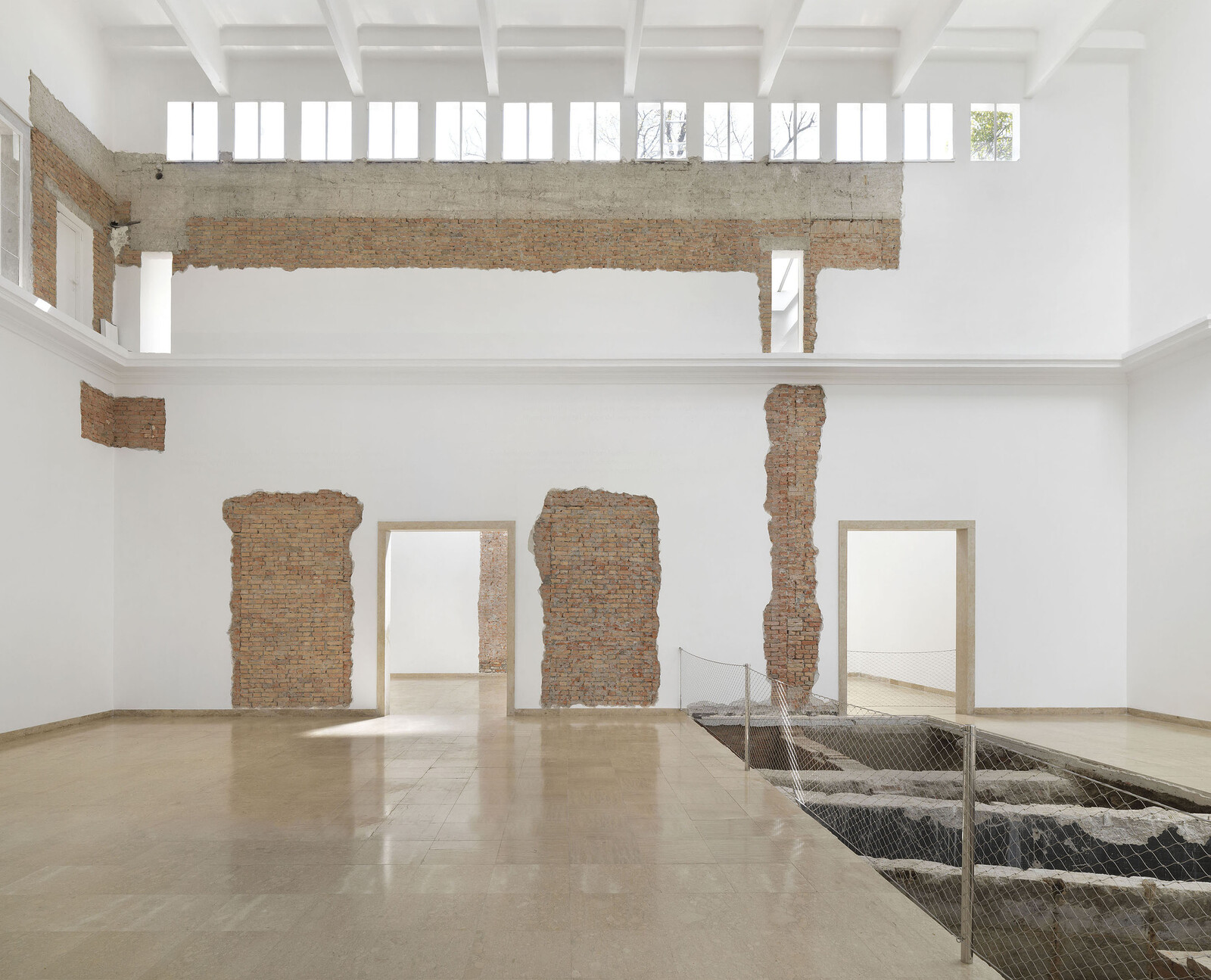Field Notes: Maria Eichhorn, “Relocating a Structure,” German Pavilion, 59th Venice Biennale
by Jef Declercq
For her contribution to this year’s Venice Biennale, Maria Eichhorn has presented Relocating a Structure. German Pavilion 2022, 59th International Art Exhibition – La Biennale di Venezia, a multifaceted project that is made accessible to the public in various ways. The most visible element of Relocating a Structure is Eichhorn’s architectural intervention at the German Pavilion itself, a structure and site that, according to the artist, “demands site-specificity.” Originally built in 1909 as the Bavarian Pavilion, the building was monumentally redesigned by the Nazi Regime in 1938 to its their cultural ideology. This extension of the pavilion’s height and depth drastically changed the building’s proportions and subsequently its psychological effect on its visitors, an estrangement that only intensified after World War II. By removing the homogenizing layers of plaster from the walls and excavating parts of the foundations, Eichhorn has exposed the joins between the original architecture and the Nazi-era modifications. Based on in-depth research into the history of the building and an analysis of its structure, the artist’s anti-renovations have made the pavilion’s contrived characteristics tangible. Though originating from forensic examination rather than personal expression, Eichhorn’s meticulous incisions inject a palpable drama into the experience of the pavilion. The revealed structural traces make the architectural chronological record legible and affirm a direct material connection between the past and the present. Subtle white-on-white wall texts clarify the history behind the newly exposed transitions to attentive visitors.
The second component of Relocating a Structure is its comprehensive publication. In more than 350 pages, the artist has collected images of the spatial interventions made in the pavilion, along with extensive documentation on the building’s history and a personal reflection on the project. Furthermore, the publication includes essays on the political, social, and artistic context of the Venice Biennale by various contributors. From within their respective fields of expertise, each of these writers takes a historical perspective to examine the contemporary challenges facing the institution. The book grants additional attention to Eichhorn’s concept of relocating the German Pavilion, which served as the starting point for the project. The idea was to physically remove the entire pavilion and transport it to a temporary storage site for the duration of the Biennale, after which the building would be reinstalled in its original location in the Giardini. This gesture would have opened up a free, empty space and radically altered the visual and spatial dynamics of the Biennale. Although never realized in a material sense, the research into the possibilities of this action, including the technical specifications, are part of the publication.
Read more of Jef Declercq’s Field Notes review on Art & Education.
Field Notes is a new series of reviews from the next generation of art writers. Featuring texts on the 59th Venice Biennale and Documenta 15 contributed by students and recent graduates, Field Notes makes original connections between the work and the world and takes a closer look at what other observers might have missed.




